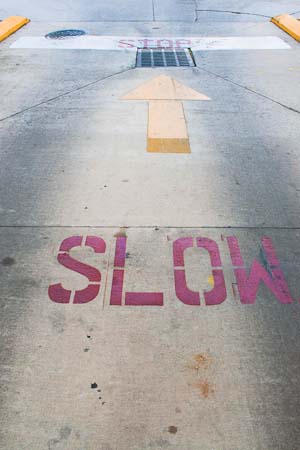(The three people described below are each composites of a number of clients who have come through my public speaking programs and services.)
Jane was bright, experienced, and the only female on her work team. Frustrated, she felt that nothing she said at team meetings was taken seriously and her participation was frequently discounted or ignored. When she came to me, she wanted to become more visible as a strong member of her team.
Jim formed a small startup company with 3 other classmates after graduating from college and soon became director of marketing. At first enjoying his work, the bloom faded when his sales force grew to twenty-five, all direct reports, many of them older than Jim. Naturally introverted, Jim wanted to overcome his shyness and his anxiety about age differences. They were limiting his ability to lead with confidence.
Miriam, well regarded in her highly technical field, often spoke to conference audiences of 1,000 or more. With a quick mind and enthusiasm for her subject matter, she tried to cover a wealth of material, talking quickly and packing her slides densely with information. Miriam found that her audiences often had trouble understanding and absorbing the material she presented. She wondered what she needs to do to be more effective at conveying her message.
 Each of these people was an expert in their field, with a solid foundation in their subject matter. There was a gap, though, between their expertise and knowledge and their ability to communicate effectively. This gap hindered their ability to be truly effective leaders.
Each of these people was an expert in their field, with a solid foundation in their subject matter. There was a gap, though, between their expertise and knowledge and their ability to communicate effectively. This gap hindered their ability to be truly effective leaders.
As each of them worked to strengthen their presence using some very simple strategies, they became more influential and respected in their respective fields.
Here are some of the simple essential strategies you too can use to develop your leadership presence:
 1. Slow down. By using the breath to slow your thoughts, you will be much more available to the present moment.
1. Slow down. By using the breath to slow your thoughts, you will be much more available to the present moment.
This is often the most important step towards developing an effective leadership presence. In this culture of adrenalin soup everything goes fast. Day in, day out, people are besieged by urgent demands on their time – ubiquitous cell phone access, relentless emails, increased workloads, and complicated family schedules – so that they race from one activity to another, attempting to multitask as they go. This state of continuous urgency and information overload is amplified by the racing thoughts accompanying the stress and anxiety that arise when people encounter uncomfortable leadership situations.
Presence arises when you take a deep breath, slow down, and pay attention to what’s in front of you. By doing so, you establish a rhythm and pacing that helps others slow down and become present; and you spark more effective interactions.
2. Embody Presence: Bring all of yourself into a meeting or important presentation, not just your brains.
People with real presence are “comfortable in their own skin.” Presence is a holistic experience, where our entire being – mind, body and spirit – is engaged, not just our minds alone. At the same time, when a person is fully embodied, she authentically engages the human beings in her audience, not just their thoughts.
 One simple but effective mechanism for developing body awareness while speaking is to focus on how you are making contact with the solid ground while presenting. When anchoring attention to your physical experience and also connecting with the audience while delivering the message, you bring more of yourself to each interaction. This has the effect of drawing your audience towards you and engaging their interest and regard. It does take practice as it requires multiple awareness’s at once.
One simple but effective mechanism for developing body awareness while speaking is to focus on how you are making contact with the solid ground while presenting. When anchoring attention to your physical experience and also connecting with the audience while delivering the message, you bring more of yourself to each interaction. This has the effect of drawing your audience towards you and engaging their interest and regard. It does take practice as it requires multiple awareness’s at once.
3. The power of the relationship: Place a priority on connecting with your audience rather than your material.
This is paradoxical for most people. When asked to give a talk or speak up in a meeting, their focus is naturally drawn to the subject matter and how to convey it. But the truth is that effectiveness as speakers and leaders is less about what is said and more about who you are and how well you connect with your audience. People respond to a message because of authenticity, humanity, and ability to connect. If a speaker focuses entirely on himself and the material, he creates an experience of separation and is not available to connect with his audience.
 Instead, if you give careful thought to why you are speaking, what you want the audience to leave with, and how you can be helpful to them, you will “invite” the audience to join you. Ironically, when your relationship with the audience becomes the priority rather yourself, you’ll be less anxious, your thoughts will quiet down, and your audience will trust you more.
Instead, if you give careful thought to why you are speaking, what you want the audience to leave with, and how you can be helpful to them, you will “invite” the audience to join you. Ironically, when your relationship with the audience becomes the priority rather yourself, you’ll be less anxious, your thoughts will quiet down, and your audience will trust you more.
Here are several simple ways to invite the audience in:
Maintain eye contact with a soft, receptive gaze even while thinking. Linger with each person, truly see them, say hello to them in your mind as you speak.
Think of it as a conversation rather than a presentation. Speak naturally as if you were having coffee with a friend.
Ask yourself: How can I be of service? Instead of: How can I be perfect and show my expertise?
Let yourself be human! Don’t try to be perfect. Making mistakes is OK, it’s part of human nature. The best way to do this is not to take yourself too seriously. We are the most engaging when our audience sees that we are accessible and human just like they are.
Leadership enhanced with presence.
To enhance their leadership presence, Jane, Jim and Miriam began to incorporate these strategies into their daily interactions. While doing so, each placed special emphasis on one practice.
As Jane became more fully embodied in her meetings, she noticed that while her voice wasn’t necessarily louder, there was more power behind her words and her team members began to listen more and consider her opinions.
Jim started to place a priority on connecting with the human beings on his sales team rather than focusing his shyness and the differences in age, and he found himself more able to align with them and garner their respect.
Miriam found when she slowed down and took a breath between each major point and eliminated much of the detail in her presentations, her audiences were able to absorb more of her message.
In accessing their own natural presence, these three leaders found themselves to be much more effective in communicating their message while enjoying themselves more as well.

3 thoughts on “Closing the Presence Gap: Simple tools for rediscovering this innate leadership ability”